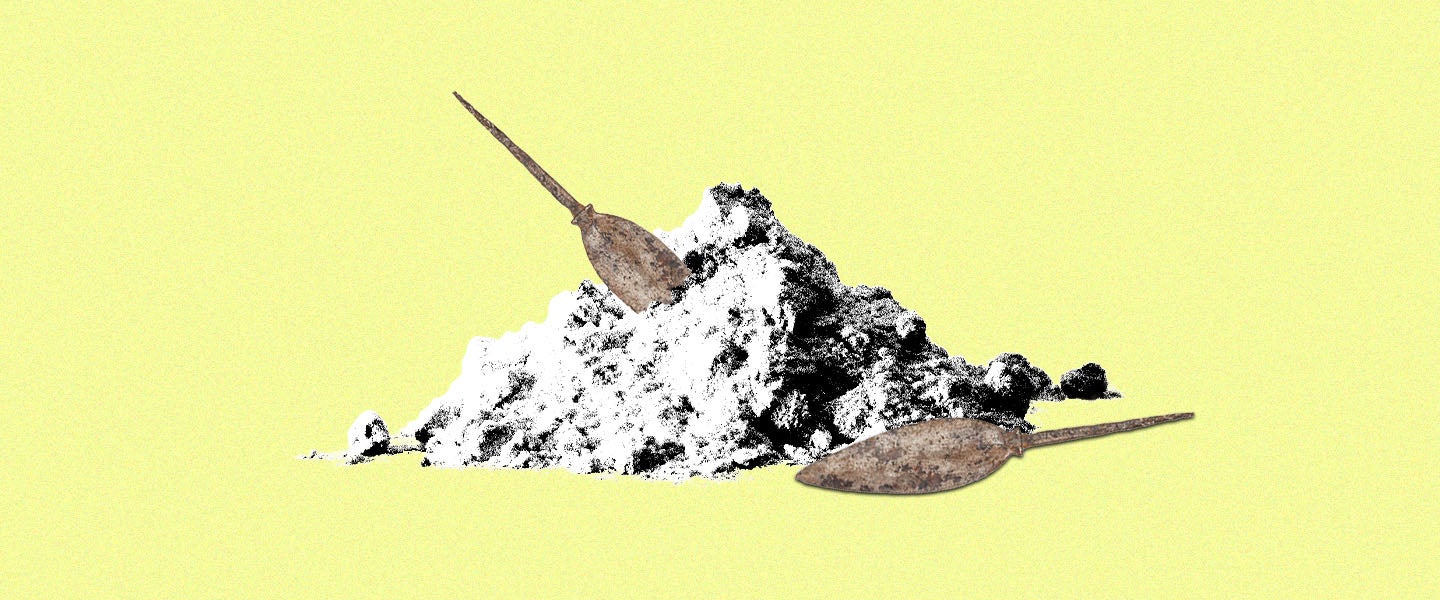A new research paper published in the Proceedings of the National Academy of Sciences reveals that archaeologists working in Bolivia recently found a “ritual bundle” containing numerous psychotropic substances, including cocaine, traces of DMT and possibly magic mushrooms.
In other words, they totally scored.
“We already knew that psychotropics were important in the spiritual and religious activities of the societies of the south-central Andes, but we did not know that these people were using so many different compounds and possibly combining them together,” said researcher José Capriles in a press release. “This is the largest number of psychoactive substances ever found in a single archaeological assemblage from South America.”
One element missing from the press release, though: Was the coke any good? I mean, are we talking upstairs coke or downstairs coke?
The best answer to such a glib question (after all, this is actually an amazing historical discovery that could provide insight into the complex rituals performed during pre-Columbian times): It was completely different than the coke we think of today — upstairs, downstairs or bargain-basement quality.
For starters, cocaine as we know it is derived from coca leaves, which have been chewed and ingested by South Americans for thousands of years. So we can confidently assume that these leaves, or some trace of them, were exactly what the archaeologists found in that “ritual bundle.”
The Transnational Institute, a collection of researchers committed to building a more sustainable planet, explains in a blog post that the coca leaf is “a harmless and mild stimulant comparable to coffee.” They also mention that it can provide numerous health benefits: “When chewed, coca acts as a mild stimulant and suppresses hunger, thirst, pain and fatigue. It helps overcome altitude sickness.”
Modern cocaine obviously is a lot different. In the late 1800s, several medical companies created a more concentrated version of the coca plant called cocaine hydrochloride, which is essentially the purest of the pure (very much the aforementioned upstairs cocaine). “It was tens to hundreds of times more powerful than chewing on a coca leaf,” Howard Markel, author of An Anatomy of Addiction, tells CNN. “It was extremely pure and extremely powerful.”
So cocaine in the late 1800s and early 1900s was totally freaking lit, at least in terms of making you feel good, compared to the plain old coca leaves people were chewing centuries earlier. (I’m pretty sure then, it wasn’t the first thing you’d reach for when experiencing altitude sickness.) But when we started moving even closer to modern times — that is, when cocaine became extremely profitable thanks in part to its illegal status — many underground manufactures basically recreated the cocaine hydrochloride synthesizing process used during the 1800s by implementing extremely harmful ingredients, like kerosene, bleach and ammonia (very much the aforementioned downstairs cocaine).
Plus, dealers started cutting their cocaine to increase profits, adding even more shit ingredients that bring the quality way down. In 2014, for instance, the English government stated that 80 percent of cocaine it seized contained levamisole, a deworming drug used to treat livestock. The U.K. authorities speculated that levamisole added weight to the mixture, making the cocaine more valuable. Coke dealers and manufacturers also often use additional anesthetics, including benzocaine, lidocaine and procaine, to enhance the numbing effects of their product, further decreasing its potency while certainly increasing its risk factor.
So in terms of coke vintage, the ancient stuff is much better for you, but the 100-year-old “ritual bundle” is the really pure shit.

